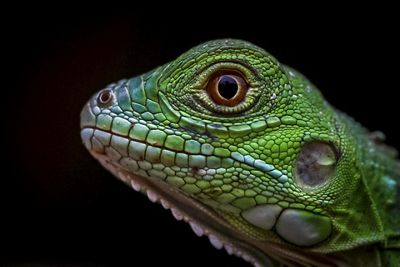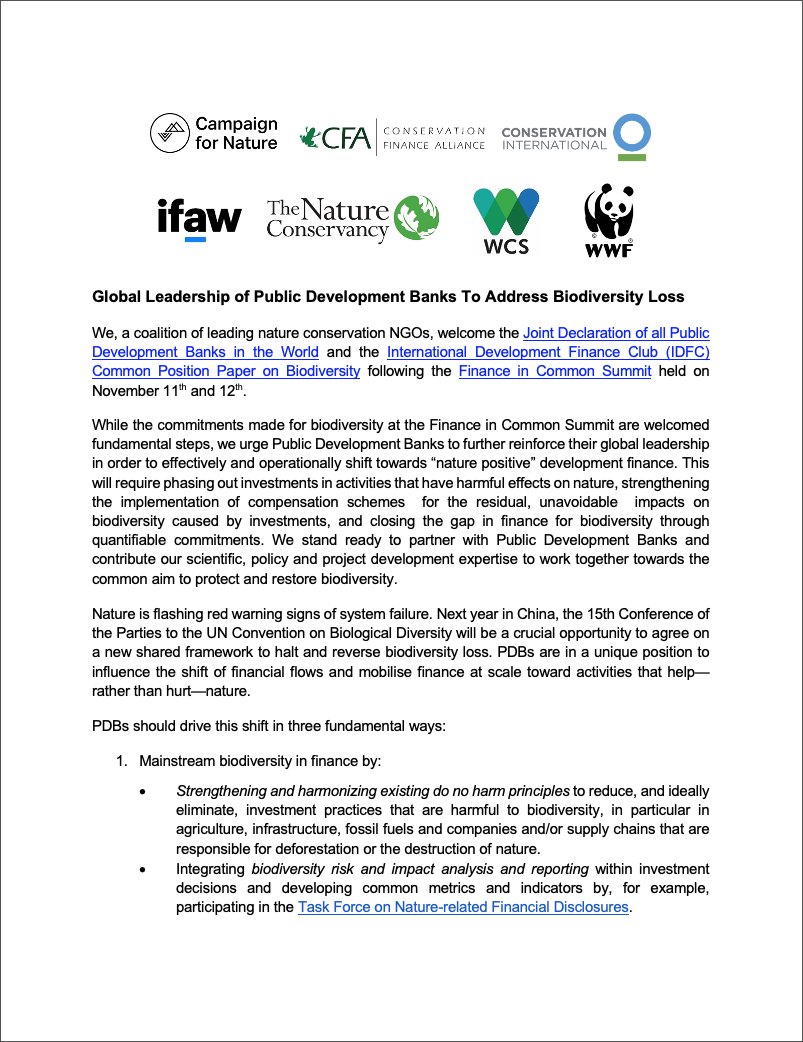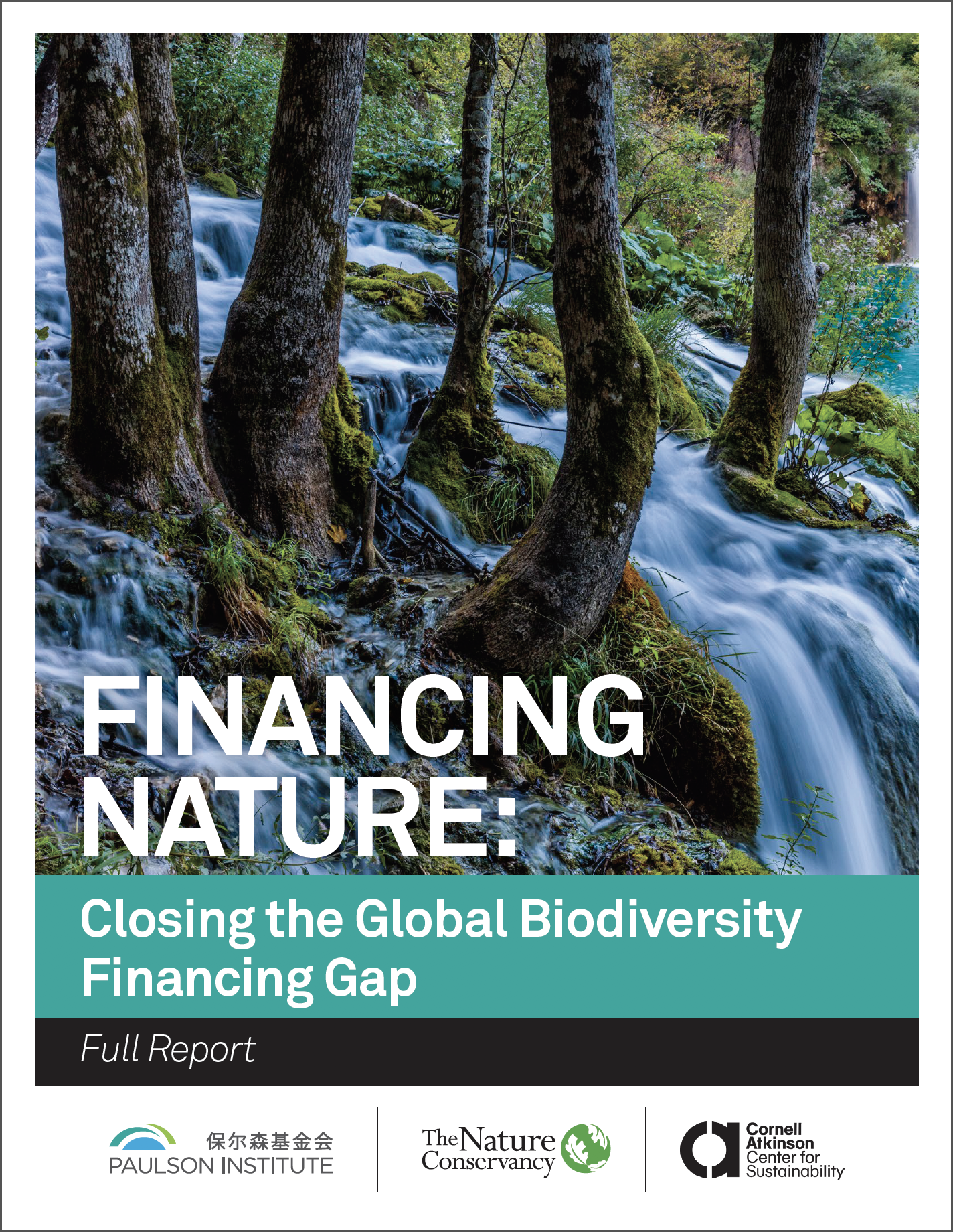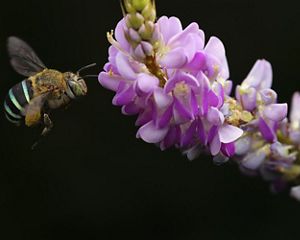Nature is the underpinning of our societies, health, and economies—but right now, it’s in danger. The United Nations’ Intergovernmental Science-Policy Platform on Biodiversity and Ecosystem Services (IPBES) recently warned that we are exploiting nature more rapidly than it can renew itself. Meanwhile, research from the World Economic Forum (WEF) shows that around half gross world product is highly or moderately dependent on nature.
As the world grapples with both the health and financial impacts of the COVID-19 pandemic, we have an opportunity—and a responsibility—to ensure that nature is an integral part of business, banking, and rebuilding decisions.
Last week, I had the pleasure of speaking at the first-ever global gathering of Public Development Banks, during which all 450 banks issued a joint declaration in which they committed to address biodiversity loss. In addition, the International Development Finance Club released a position paper on biodiversity. These are big steps in the right direction. And with a few key shifts, PDBs can play an outsized role in driving a nature-positive recovery.
Driving Finance for Nature
To reverse the decline in biodiversity by 2030 and avoid devastating repercussions from nature loss, it will cost about USD $700 billion per year—this is at least $300 billion more than most earlier estimates. The recipe for bridging the gap between what we are currently investing in nature and what we actually need to be spending and changing goes something like this: first, cut the financing gap in half by redirecting or ceasing altogether subsidies that harm nature; second, mobilize national governments to enact policies, regulations and incentives that create market opportunities to invest in nature; and, last but not least, get the private sector on board.

Report: Financing Nature
The most comprehensive assessment to date on how much the world currently spends to benefit nature, how much more we need to be spending, and how we can close that nature funding gap now. Get the report now ›
To catalyze these steps into action, we need leadership and commitment from Public Development Banks.
There are currently about 450 Public Development Banks (PDBs) around the world, operating at sub-national, national, regional, international and multilateral levels. The volume of activity of these institutions amounts to about USD $2 trillion annually—10 percent of the total amount invested in the world every year by all public and private sources combined.
With their far-reaching mandates, PDBs represent a “visible hand” that can mobilize and direct finance in a way that prioritizes sustainable development alongside economic recovery and move away from “either/or” thinking.
On the ground, PDBs can help deliver both institutional change and real economic outcomes. For example, their funding and advice to governments can boost investment in social infrastructure, particularly around healthcare. They can also help build the confidence to achieve the 2050 carbon neutrality goals required by the Paris Accord by setting their own ambitious targets and reporting on their progress—all while mainstreaming the deployment of nature-based solutions.
Quote
As the world grapples with both the health and financial impacts of the COVID-19 pandemic, we have an opportunity—and a responsibility—to ensure that nature is an integral part of business, banking, and rebuilding decisions.
The Time is Now
Download the Statement
- NGO Coalition Statement (.docx)
There is an enormous opportunity—and urgency—to apply lessons learned from climate finance and fund biodiversity conservation in ways that lead to lasting positive impact. With this goal in mind, The Nature Conservancy has joined efforts with other leading conservation organizations to identify three key opportunities for PDBs to drive systemic change that addresses the biodiversity challenge:
- Leading by example in “mainstreaming” biodiversity (i.e., ensuring nature is at the heart of all decision-making)
- Mobilizing investments in nature
- Joining forces to support countries’ nature-positive investments
Lead By Example
This is a moment for leadership. PDBs can set an example for governments, corporations, public utilities and other institutions by mainstreaming biodiversity protection principles into their project finance processes.
The first step is to strengthen and harmonize “do no harm” principles with the goal of reducing, or better still eliminating entirely, investment practices that are harmful to biodiversity. This is especially important for sectors like agriculture, infrastructure, and companies with high-impact, deforestation-heavy supply chains. Current ‘safeguard’ practices lack the necessary traceability, accountability and transparency standards.
Quote: The Finance for Biodiversity Initiative
USD $3.1 trillion in financing from development banks is currently funding projects that are highly dependent on vulnerable ecosystems.
Worldwide, for example, we’ve spent USD $20 billion since 2010 to save forests. Unfortunately, we’ve simultaneously invested USD $777 billion in clearing them for unsustainable timber or ever-expanding farmland. In other words, we’ve spent an eye-watering 40 times more to destroy forests than save them. Deforestation rates are now 35 percent higher than they were in the first decade of the new millennium.
The Finance for Biodiversity Initiative found that USD $3.1 trillion in financing from development banks is currently funding projects that are highly dependent on vulnerable ecosystems. These investments "were collectively responsible for risking around $1.1 trillion in damage to the natural world every year, despite many of the groups having a mandate to finance sustainable development."
When a PDB is considering infrastructure investments, it can secure better outcomes for climate, biodiversity and equitable economic development by supporting integrated, large-scale spatial plans. With global economic output expected to double over the next two decades, we can expect trillions of dollars to be invested in new energy and infrastructure projects around the world. If we plan carefully and collaboratively, our science shows us that its possible meet the human demands from rapid growth while still protecting the nature that sustains us.

Mobilize Investments in Nature
Public development banks should be seeking out nature-positive investments: this is about shifting from simply “doing no harm” to “actively doing good.” One way to achieve nature-positive outcomes is by setting operational targets for biodiversity finance in their portfolios—just like some banks now do with climate finance.
PDBs have the tools, muscle and means to better leverage private-sector finance by addressing some of the challenges that come along with investments in nature and natural infrastructure. These nature-positive investments can include riskier profiles, high transaction costs, longer timeframes and below-market returns (in some cases). Why not provide grants and technical assistance throughout the life of a project? What about truly concessionary finance and accommodating flexible investment terms? Or taking on more risks in nature-based projects? All of these shifts would help accelerate the flow of private capital into nature-positive investments.
Quote
Public development banks should be seeking out nature-positive investments: this is about shifting from simply “doing no harm” to “actively doing good.”
More capital flow into nature also means more potential jobs. For example, we also know that large-scale nature restoration efforts have the potential to create as many as 40 jobs per every $1 million invested. Transitioning to a nature-positive economy could generate up to $10.1 trillion in annual business value and create 395 million jobs by 2030. At a time when economies and livelihoods have been derailed by the ongoing pandemic in many places, nature offers new paths forward.
Equally important, increasing protection for natural ecosystems will mitigate against the risks of future zoonotic diseases spread to humans, reducing the likelihood of another COVID-scale disaster in the longer term. One study found that the cost of preventing further pandemics over the next decade by protecting wildlife and forests would equate to just 2 percent of the estimated financial damage caused by COVID-19.
What’s bad for nature is also bad for business. Together, the three largest sectors that are highly dependent on nature—construction, agriculture, and food and beverages—generate close to $8 trillion of gross value added (GVA) for the global economy. Meanwhile, one fifth of all countries face some level of ecosystem collapse from mass biodiversity loss.
Quote

Although we are all working on different pieces of the response, it is important to acknowledge that the world needs a broad range of solutions, working in concert, not conflict, to emerge from this emergency.
Join forces to support countries’ nature-positive investments
While PDBs can’t change policies and regulatory frameworks directly in the countries where they lend, they do establish close financial and advisory ties and can influence policies. And by joining forces, the banks can maximize their influence to realize an even greater impact. Development banks can work strategically with other banks to move away from a traditional, project by-project lending approach and towards multi-year financing frameworks that support well-planned, nature-positive economic development.
The Finance in Common Summit was an important step in driving closer coordination among the banks in the run-up to next year’s vital UN Climate Conference COP26 in Glasgow and UN Biodiversity Summit COP15 in Kunming. The interrelated trends of warming climate and biodiversity collapse are together creating an unprecedented planetary crisis. Although we are all working on different pieces of the response, it is important to acknowledge that the world needs a broad range of solutions, working in concert, not conflict, to emerge from this emergency. If we’re to make the most of next year’s two vital COPs and turn this ship around, Public Development Banks will be a critical part of the solution.
Resources
-

NGO Coalition Statement
TNC has joined efforts with other leading conservation organizations to identify three key opportunities for Public Development Banks to drive systemic change that addresses the biodiversity challenge. More information
DOWNLOAD -

Financing Nature
The most comprehensive assessment to date on how much the world currently spends to benefit nature, how much more we need to be spending, and how we can close that nature funding gap now. More information
DOWNLOAD
Global Insights
Check out our latest thinking and real-world solutions to some of the most complex challenges facing people and the planet today.




